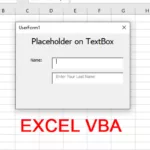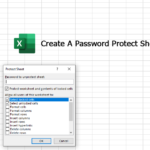Converting Numbers to Words in Excel: A Comprehensive Guide
Converting numbers to words in Excel is a useful feature, especially for creating financial documents like invoices and checks. While Excel doesn’t have a built-in function for this, you can achieve it using VBA (Visual Basic for Applications). In this article, we’ll guide you through the process of creating a custom function in Excel to convert numbers to words.
Example: 1234.56 is One Thousand Two Hundred Thirty-Four and Fifty-Six Cents
Why Convert Numbers to Words?
- Check Writing: Helps ensure the amount is clearly understood.
- Invoices: Adds a professional touch to financial documents.
- Reports: Improves clarity and presentation.
Step-by-Step Instructions
Step 1: Open the VBA Editor
- Open your Excel workbook.
- Press
ALT + F11to open the VBA editor.
Step 2: Insert a New Module
- In the VBA editor, click
Insert. - Select
Module.
Step 3: Add VBA Code to Convert Numbers to Words
Copy and paste the following VBA code into the module:
Function NumberToWords(ByVal Number As Double) As String
Dim Units As Variant
Dim Teens As Variant
Dim Tens As Variant
Dim Thousands As Variant
Dim IntegerPart As Long
Dim DecimalPart As Double
Dim TempStr As String
Dim DecimalStr As String
Dim DecimalNumber As Long
Units = Array("", "One", "Two", "Three", "Four", "Five", "Six", "Seven", "Eight", "Nine")
Teens = Array("Ten", "Eleven", "Twelve", "Thirteen", "Fourteen", "Fifteen", "Sixteen", "Seventeen", "Eighteen", "Nineteen")
Tens = Array("", "", "Twenty", "Thirty", "Forty", "Fifty", "Sixty", "Seventy", "Eighty", "Ninety")
Thousands = Array("", "Thousand", "Million", "Billion")
' Handle zero
If Number = 0 Then
NumberToWords = "Zero"
Exit Function
End If
' Split number into integer and decimal parts
IntegerPart = Int(Number)
DecimalPart = Round(Number - IntegerPart, 2)
DecimalStr = ""
If DecimalPart > 0 Then
DecimalNumber = DecimalPart * 100
DecimalStr = " and " & ConvertToWords(DecimalNumber, Units, Teens, Tens, Thousands) & " Cents"
End If
' Convert integer part
TempStr = ConvertToWords(IntegerPart, Units, Teens, Tens, Thousands)
NumberToWords = TempStr & DecimalStr
End Function
Function ConvertToWords(ByVal Number As Long, Units As Variant, Teens As Variant, Tens As Variant, Thousands As Variant) As String
Dim Result As String
Dim TempStr As String
Dim ThousandIndex As Integer
Dim TempNumber As Long
Result = ""
ThousandIndex = 0
Do While Number > 0
TempNumber = Number Mod 1000
If TempNumber > 0 Then
TempStr = ConvertHundreds(TempNumber, Units, Teens, Tens)
If ThousandIndex > 0 Then
TempStr = TempStr & " " & Thousands(ThousandIndex)
End If
Result = TempStr & " " & Result
End If
ThousandIndex = ThousandIndex + 1
Number = Number \ 1000
Loop
ConvertToWords = Trim(Result)
End Function
Function ConvertHundreds(ByVal Number As Long, Units As Variant, Teens As Variant, Tens As Variant) As String
Dim Result As String
Dim TempNumber As Long
Result = ""
TempNumber = Number \ 100
If TempNumber > 0 Then
Result = Units(TempNumber) & " Hundred "
Number = Number Mod 100
End If
If Number >= 10 And Number < 20 Then
Result = Result & Teens(Number - 10)
Else
TempNumber = Number \ 10
If TempNumber > 0 Then
Result = Result & Tens(TempNumber) & " "
Number = Number Mod 10
End If
If Number > 0 Then
Result = Result & Units(Number)
End If
End If
ConvertHundreds = Trim(Result)
End Function
Step 4: Save and Close the VBA Editor
- Click
File>Close and Return to Microsoft Excel. - Save your workbook as a macro-enabled workbook (
.xlsm).
Step 5: Use the Function in Excel
- In any cell, type the custom function
=NumberToWords(CellReference). - For example, if you enter
=NumberToWords(1234.56)in a cell, it will display “One Thousand Two Hundred Thirty-Four and Fifty-Six Cents”.
Conclusion
Using VBA to convert numbers to words in Excel adds significant value to your spreadsheets, making them more readable and professional. By following this guide, you can easily implement this functionality and enhance your Excel documents.







